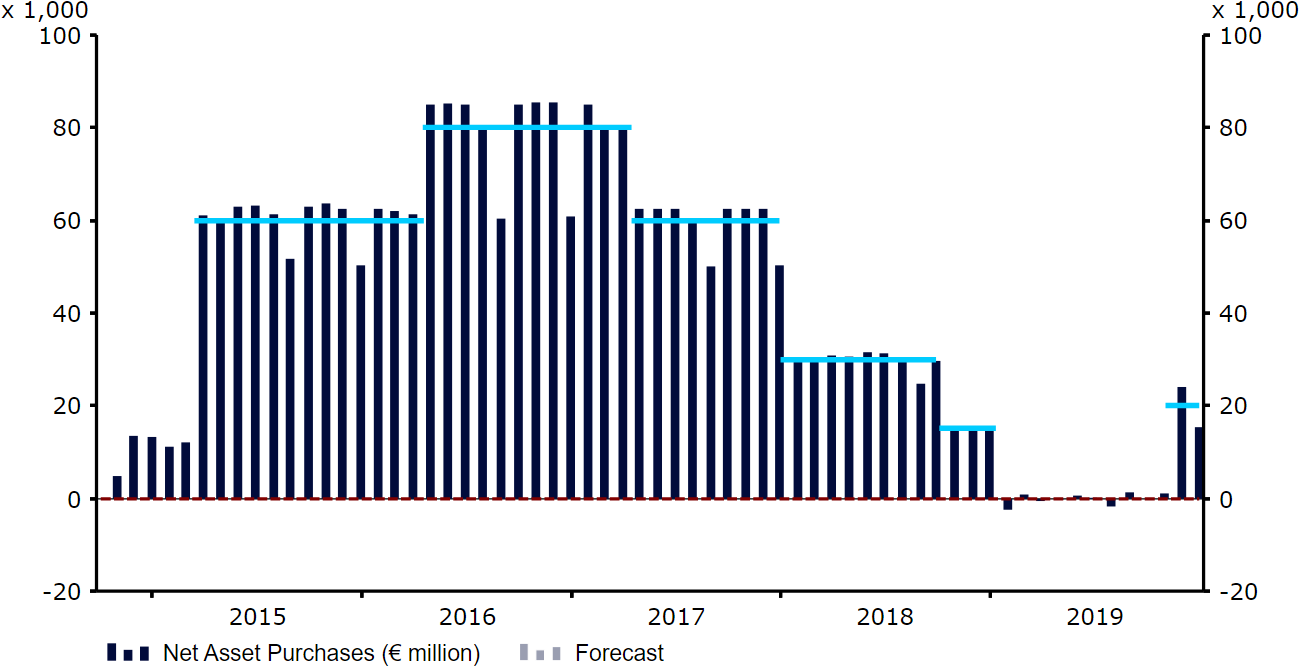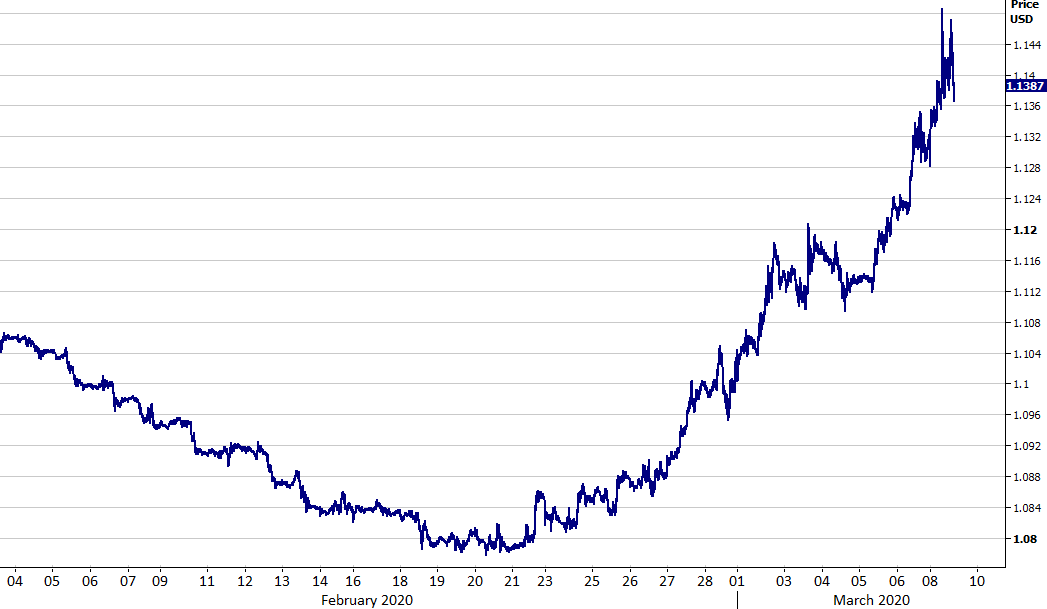What tools are left for the ECB to warn off coronavirus risks?
- Go back to blog home
- Latest
Following the Federal Reserve’s emergency 50 basis point rate cut last week, attention has turned to the policy response financial markets can expect from the ECB to tackle the downside risks posed by the coronavirus outbreak.
The issue for the European Central Bank is that unlike some of its major counterparts, including the Federal Reserve and Bank of England, it has almost no room for manoeuvre on interest rates. With the bank’s deposit rate already in negative territory (-0.5%), another 10 basis point cut is just about the limit as to how far lower rates can go before the negative impact on European bank profitability offsets the intended benefits of the cut. To that end, we think that the bank must be very careful with its policy moves in order to get the most bang for its buck.
We expect a 10 basis point rate cut in the ECB’s deposit rate on Thursday to -0.6%, in line with current market pricing. Beyond that, however, we are of the view that policymakers will aim to not overdeliver. They are likely to instead do the minimum amount possible to meet market expectations, particularly given the lack of tools available at the bank’s disposal. We are pencilling in the bank to reluctantly increase its quantitative easing programme by no more than 10 billion euros, taking the total number of assets purchased to 30 billion euros a month. This would bring the size of the programme to the levels witnessed throughout the majority of 2018 (Figure 1). While this is unlikely to have any meaningful impact on the Euro Area economy it would, at the very least, indicate to the market that the bank stands ready and able to act should the situation continue to worsen.
Figure 1: ECB Monthly Asset Purchases (2015 – 2020)
ECB President Lagarde will also want to make it clear that the bank stands ready to provide ample liquidity to the bloc, particularly to those sectors worst affected by the virus. We are, therefore, also expecting an expansion of the bank’s programme of cheap loans for banks, the targeted longer-term refinancing operation (TLTRO). This may entail an announcement that the ECB will be making the terms of the loans much more generous for domestic banks, providing they go slightly easier on small- and medium-sized enterprises that are set to be the hardest hit by the virus. Temporary relief in the form of debt forbearance could be one such way that this is achieved.
Aside from the aforementioned changes in policy, we expect Lagarde to announce a sharp reduction in the bank’s growth forecast for 2020 from the previous 1.1% projection, citing the virus as the biggest downside risk to the global economy in the short-term. She is also likely to stress that the ECB alone cannot prop up the bloc’s economy, calling on European governments to play their part by increasing fiscal spending. As we mentioned in our Fed reaction report, the problem for central banks and finance ministers around the world is that there is only so much that monetary and fiscal policy can do when faced with a health crisis. Rate cuts and increased spending will not by themselves create a vaccine and will do little to offset the supply-side shock triggered by the virus. This may limit the scope of the easing measures announced by the ECB this week. Instead, we expect the focus to be in keeping the credit channels open, particularly to SMEs that are the most exposed to the shock. Discussion of regulatory forbearance for banks that ease credit to SMEs or even targeted lending will be more supportive to the economy than interest rate cuts or additional QE. Above all, we expect the pressure on European governments to ease fiscal policies to be louder than ever at the ECB meeting.
As far as the euro is concerned, we think that the currency is well placed to continue to post gains against the US dollar in the coming months. It remains the case that the Federal Reserve has far more room to cut rates than its Euro Area counterpart. Even if the ECB over-delivered on Thursday, which we don’t think it will, the Fed looks set to cut rates by at least another 25 basis points at the end of the month. This would further lower the interest rate differentials between the US and the Euro Area – a clear positive for the euro. This is already buoying the common currency, which is currently trading around its highest position versus the dollar since March 2019 (Figure 2).
Figure 2: EUR/USD (February ‘20 – March ‘20)



